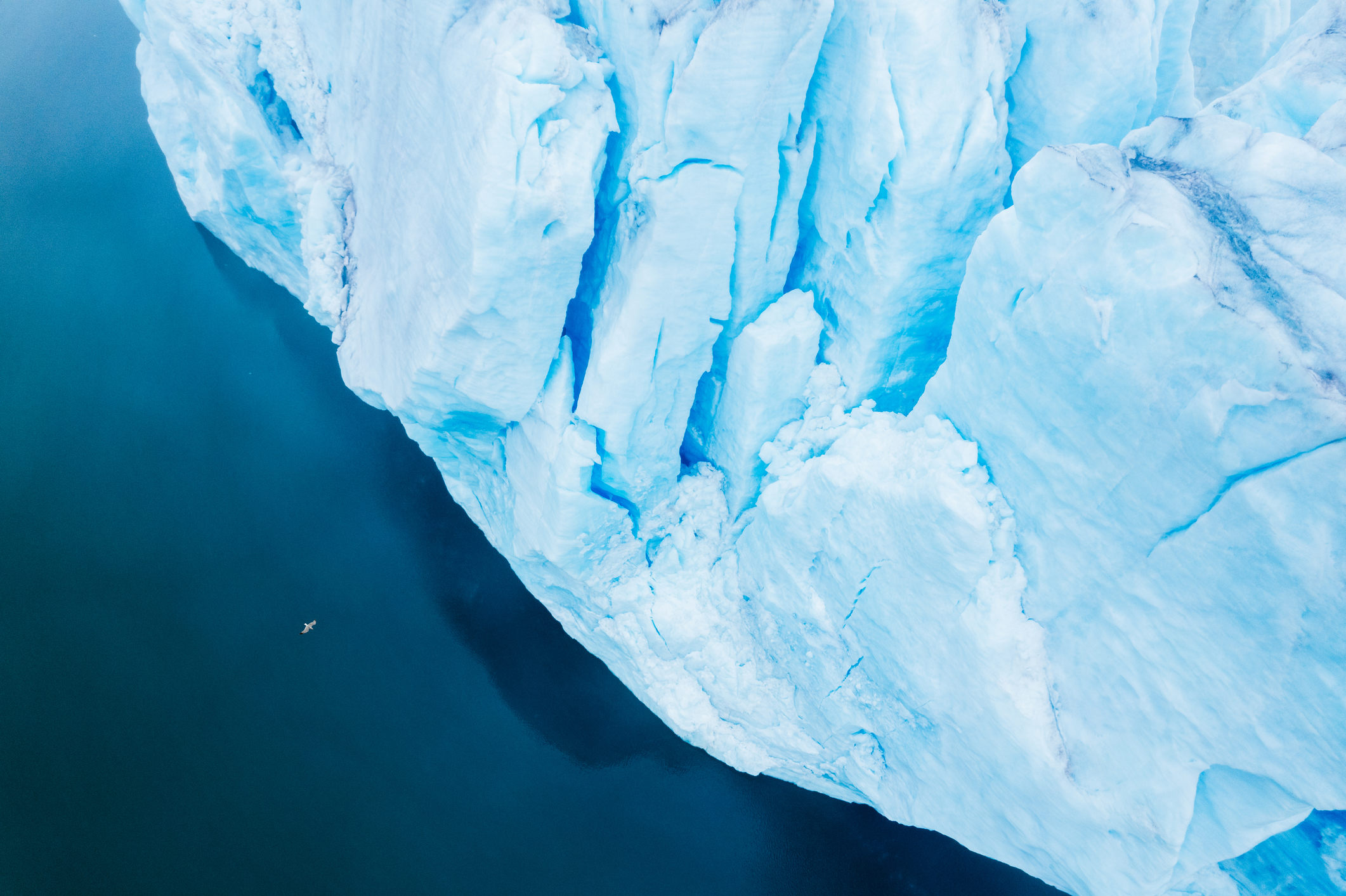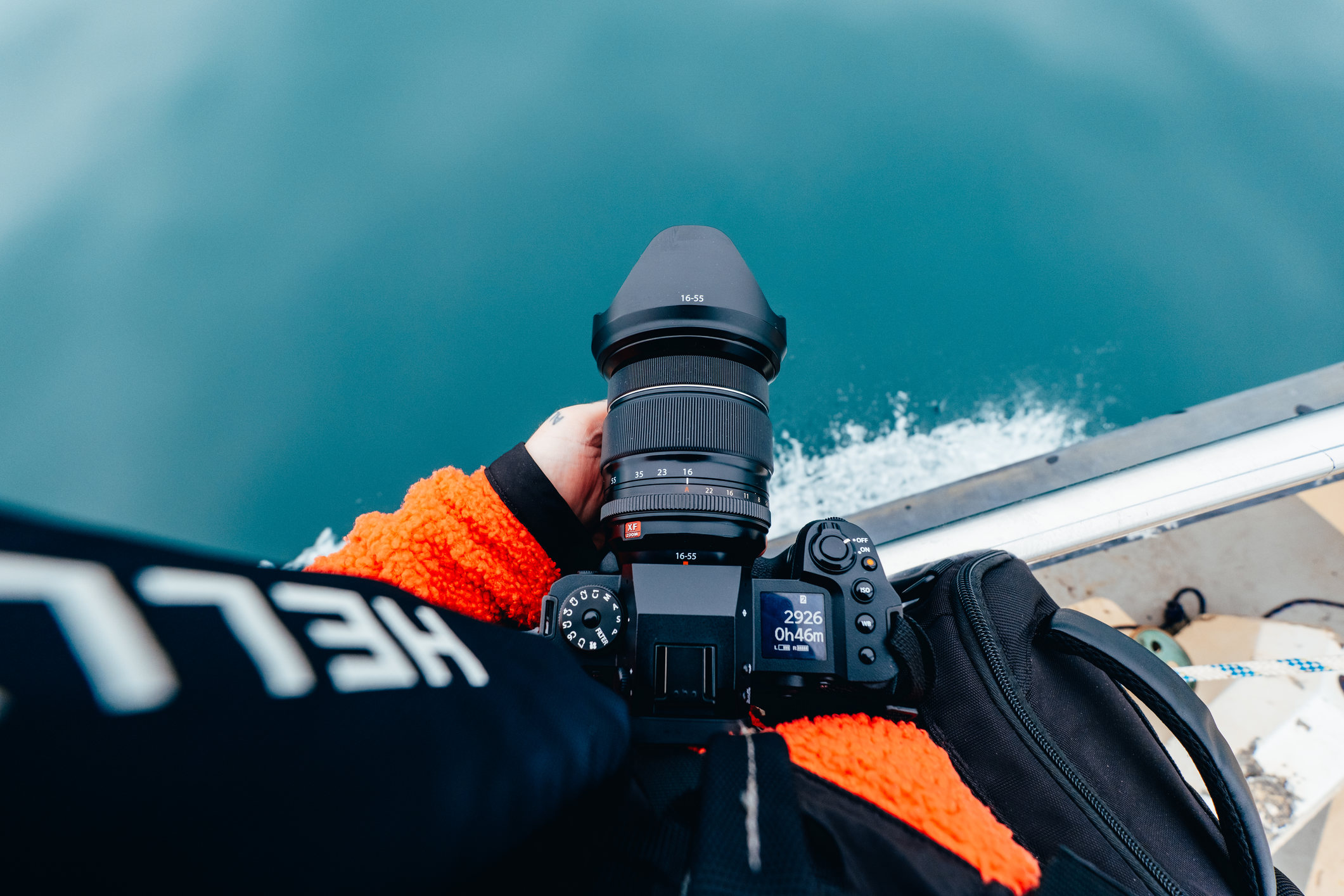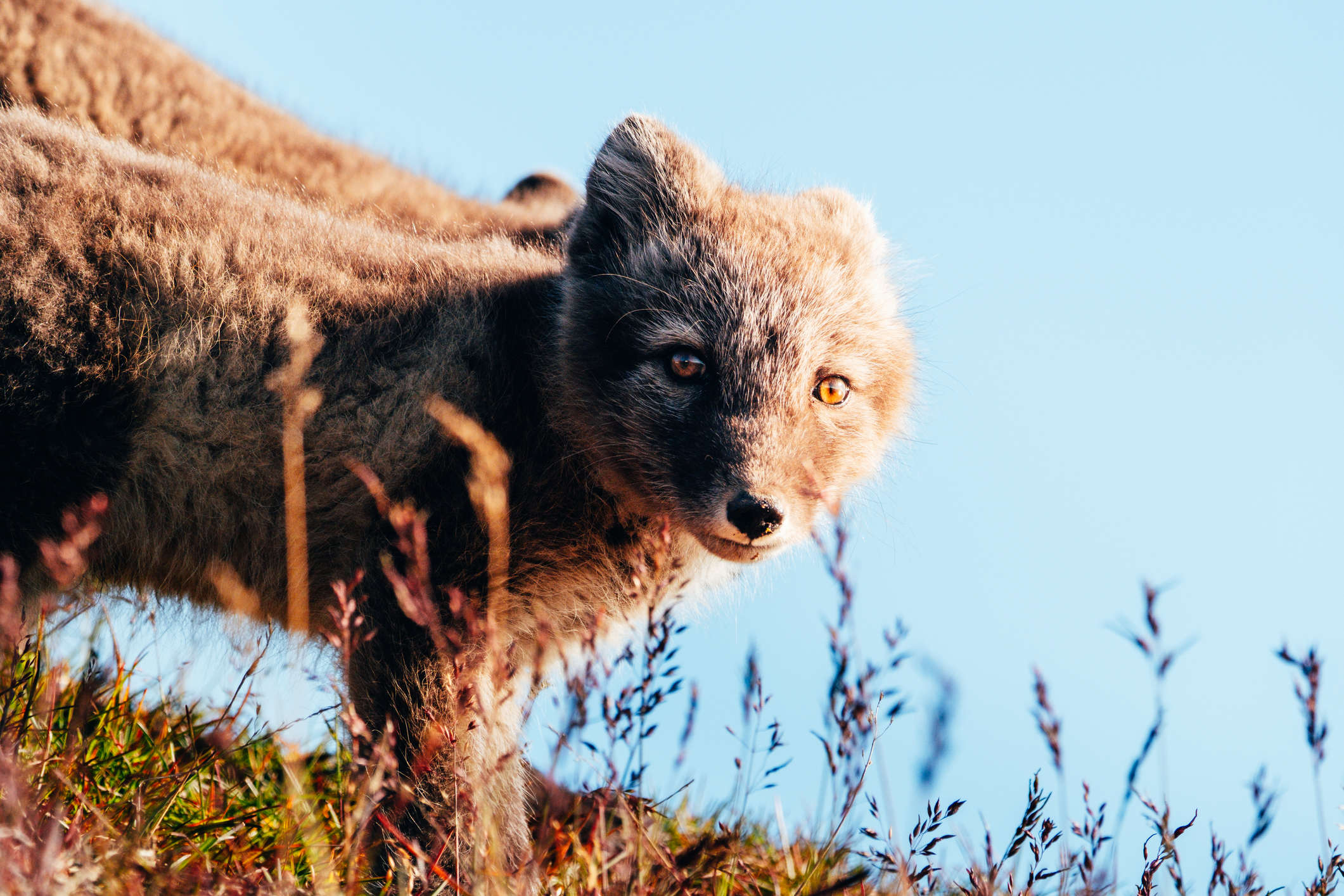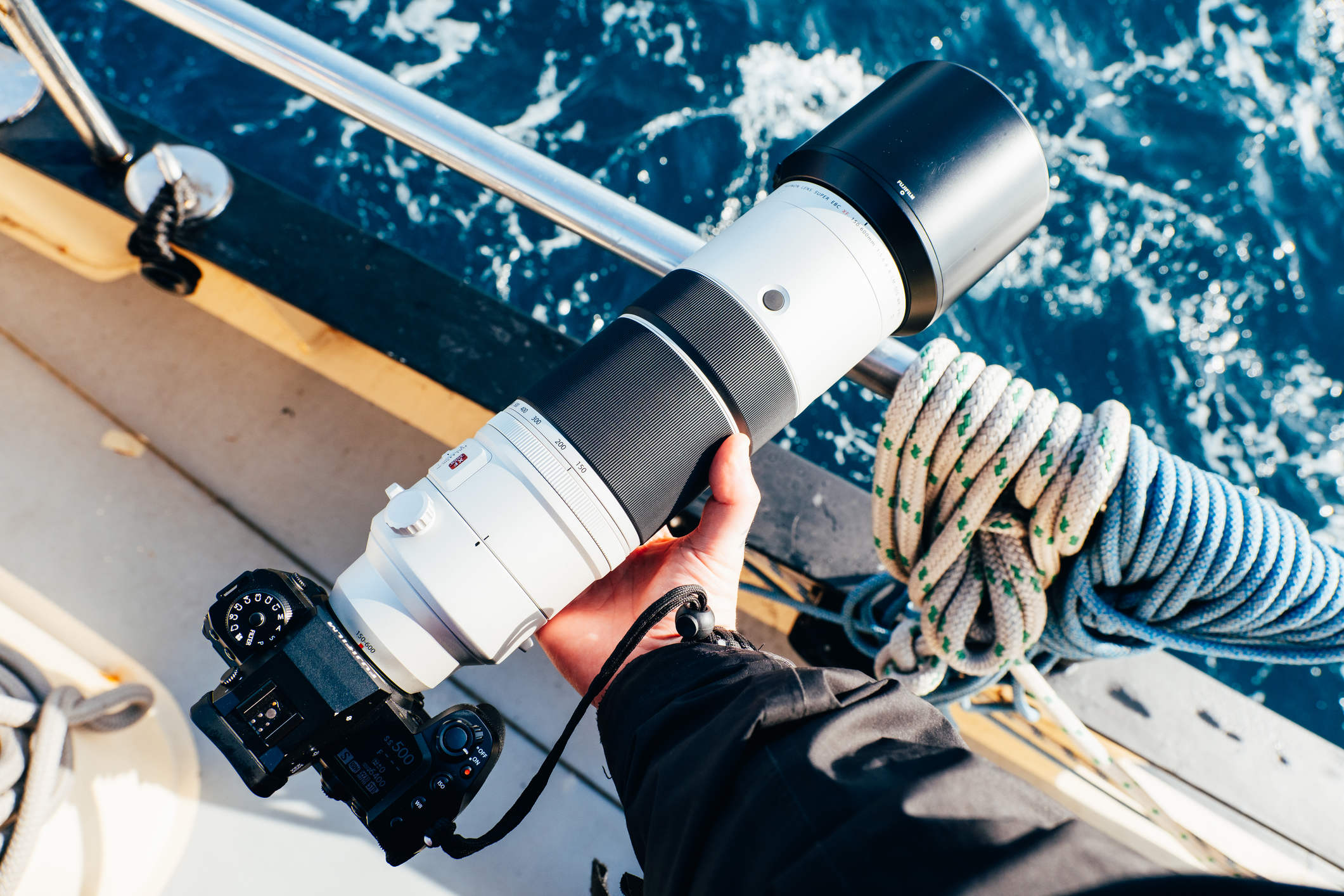
Fujifilm X-H2 & 150-600mm: Tough & Reliable Performance
The great outdoors is an unforgiving mistress, and when you’re miles away from civilisation, having reliable gear is paramount. Recently, I had the chance to put the Fujifilm X-H2 and the Fujifilm 150-600mm lens to the test while on a sailing expedition in Svalbard. Here’s a detailed review based on my hands-on experience.
A Workhorse in the Wild: Fujifilm X-H2
The Fujifilm X-H2 is a camera that thrives under pressure. Throughout our journey, from blistering winds to freezing temperatures, this camera proved to be a great companion. It didn’t hold me back once, even when another photographer’s gear shut down during our first encounter with a glacier. The X-H2’s resilience under harsh conditions is a testament to its robust build quality and engineering.
Technical Specifications of the Fujifilm X-H2
- Sensor: 40.2 MP X-Trans CMOS 5 HR
- Image Processor: X-Processor 5
- ISO Range: 125 to 12800 (expandable to 64 to 51200)
- Autofocus System: Intelligent Hybrid AF with up to 425 selectable points
- Continuous Shooting: Up to 20 fps with electronic shutter
- Video Recording: 8K/30P, 6.2K/30P, 4K/60P
- Viewfinder: 5.76 million dots OLED, 0.8x magnification
- LCD Screen: 3.0-inch, 1.62 million dots, vari-angle touchscreen
- Weather Sealing: Dust and moisture-resistant, operating temperature down to -10°C (14°F)
- Battery: NP-W235, capable of approximately 600 shots per charge
- Dimensions: 135.5mm x 92.6mm x 84.6mm
- Weight: 660g (including battery and memory card)

In terms of ergonomics, the X-H2 feels like a natural extension of your hand, especially when paired with the battery grip. The grip adds not only extra battery life but also improved handling, which is crucial when you’re out in the field for extended periods. The buttons are intuitively placed, making it easy to adjust settings on the fly without taking your eye off the subject.
The camera’s fast and accurate autofocus was a game-changer, allowing me to capture stunning images of the arctic landscape and wildlife with ease. The images produced were consistently sharp, showcasing impressive dynamic range and beautiful color rendition. Navigating the menu system was a breeze, thanks to its straightforward and user-friendly design. This is particularly beneficial when you need to make quick adjustments in rapidly changing conditions.

The Long Reach: Fujifilm 150-600mm Lens
Now, let’s talk about the Fujifilm 150-600mm lens. This telephoto powerhouse surprised me with its relatively light weight, considering its range. This made it easier to carry during long hikes and didn’t add too much strain, even after a full day of shooting. However, its maximum aperture does mean you’ll often need to bump up the ISO, especially in low light situations. Despite this, the lens delivered clean, detailed images, bringing out the intricate textures of the landscape and wildlife.
Technical Specifications of the Fujifilm 150-600mm Lens
- Focal Length: 150-600mm (35mm format equivalent: 229-914mm)
- Maximum Aperture: f/5.6-f/8
- Minimum Aperture: f/22-f/32
- Lens Construction: 24 elements in 17 groups (includes 3 ED and 4 Super ED elements)
- Angle of View: 10.8° – 2.7°
- Minimum Focus Distance: 2.4m (throughout the entire zoom range)
- Maximum Magnification: 0.24x (telephoto end)
- Optical Image Stabilization: Up to 5 stops
- Autofocus Motor: Linear motor
- Weather Sealing: Yes, dust and moisture-resistant, freeze-proof down to -10°C (14°F)
- Filter Size: 82mm
- Dimensions: 314.5mm (length) x 99mm (maximum diameter)
- Weight: 1605g

The photos taken with this lens were exceptionally sharp, with great dynamic range and vibrant colours. For still subjects, the autofocus was spot-on, reliably locking in with precision. However, I did encounter some focusing issues with fast-moving subjects, such as the elusive arctic foxes. The lens tended to hunt and miss focus at critical moments, which was a bit disappointing. I found myself missing a few potentially great shots of the foxes in action. In comparison, my Fujifilm 100-400mm lens felt snappier and more accurate in these situations. That said, the 150-600mm lens still managed to capture some remarkable images, proving its worth despite its quirks.
Capturing Motion: Video Performance
Switching gears to video, the X-H2 produced pleasing footage with great colours. However, one issue that stood out was the auto exposure adjustment. It tended to be quite sudden and sharp, creating a flickering effect that can be jarring. While I haven’t yet found a way to adjust the speed of these transitions, I managed to mitigate the issue by assigning the auto exposure lock to the AEL button. This workaround allowed me to lock in the exposure before starting to shoot, resulting in smoother footage.

Final Thoughts
Overall, the Fujifilm X-H2 and the Fujifilm 150-600mm lens make a formidable team for wildlife and landscape photography, particularly in challenging environments. The camera’s durability, fast and accurate focus, and ergonomic design make it a reliable choice for any adventure. The lens, while occasionally struggling with fast-moving subjects, delivers stunningly sharp and vibrant images. Despite some minor drawbacks in video performance and autofocus with fast action, the combination of these two pieces of equipment offers a robust solution for capturing the beauty of the wild.
If you’re in the market for gear that can withstand the elements and deliver top-notch performance, the X-H2 and the 150-600mm lens are certainly worth considering. Just be prepared for a bit of a learning curve with the lens’s autofocus on fast subjects and some tinkering with video exposure settings. In the end, the rewards of using this setup far outweigh the challenges, making it a solid choice for any serious photographer venturing into the great outdoors.

One Comment
James Brooks
Your insights on the Fujifilm X-H2 have me considering an upgrade.